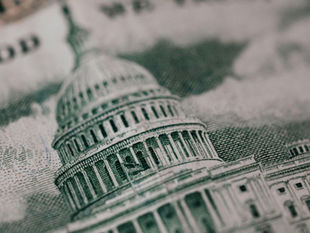
A Lose-Lose Situation: The State of America’s Rare Earth Market
0
133
0

Rare earth elements refer to a group of seventeen metals that contribute to the defining technologies of the 21st century. From electric vehicles to fighter jets, rare earth elements are essential to modern technological innovation. China maintains dominance over the sector, holding the world’s largest reserves and acting as the leading producer and refiner of rare earth metals with an estimated 90% market share. In
2024, China supplied 77% of US rare earth imports.
Since April, trade tensions between China and the US have escalated. President Donald Trump imposed harsh tariffs on Chinese imports in an effort to reduce US dependence on China for rare earth elements, resulting in China retaliating by weaponizing its market control through the implementation of export restrictions on the metals most crucial to the US economy.
The US Department of Defense (DoD) classifies this continued reliance on foreign sources for rare earth elements as a national security risk. In response, the DoD recently struck an unprecedented deal with the country’s only active rare earth mining company, MP Materials. In a move that turns sharply toward resource nationalism, the DoD took a major ownership stake and secured long-term supply guarantees. At the same time, President Trump has issued a series of executive orders accelerating domestic rare earth element production by loosening regulatory barriers that open federal and offshore lands to new mining projects.
With the expansion of domestic rare earth element mining and processing, the US faces growing environmental and social costs without the counterbalancing benefits of a clean energy transition. President Trump has consistently worked toward weakening the renewable energy sector. On his first day in office, he paused new wind and solar permits on federal lands, halted offshore wind leasing, served stop-work orders, and froze federal permitting for renewable projects. His administration also cut renewable energy and electric vehicle incentives, subsidies, and grants established under the Inflation Reduction Act.
Rare earth mining often violates Indigenous land rights, destroys ecosystems, and generates significant pollution and toxic byproducts. Deregulation weakens oversight in an already environmentally risky industry, allowing more firms to enter the market and expand harmful operations that carry long-term socioecological consequences. However, these harms could be mitigated by strong government regulation, and when managed properly, the renewable energy industry can generate substantial benefits that offset the costs of mineral extraction.
The rare earth market was valued at $7.66 billion in 2023 and is projected to increase three to seven times by 2040, largely driven by global shifts toward clean energy technologies. Under the 2016 Paris Agreement, which America has since withdrawn from, signatory nations are obligated to reduce emissions to cap the global temperature increase. To achieve this goal, countries must accelerate the shift toward renewable energy infrastructure, which will require the global mineral market to grow more than threefold by 2040. Solar plants, wind farms, and electric vehicles all depend on significantly more minerals than their non-renewable counterparts. For example, an onshore wind plant requires roughly nine times more mineral resources than a gas-fired plant.
Despite this growing global demand, downstream action for rare earths under Trump prioritizes military contractors and big tech. However, American military equipment accounts for only about 1% of the global demand for rare earths, while semiconductors and AI contribute around 10%. China’s advantage in the rare earths sector comes not only from its abundant supply but also from its ability to respond to and generate domestic demand. China is the leading country in renewable energy deployment and products, installing as much solar capacity as the rest of the world combined in 2022, and doubling that level in 2023. In contrast, the US cannot realistically compete as a rare earths powerhouse with the current administration suppressing renewable energy deployment.
By dismantling support for renewable energy technologies, Trump undermines the very industries that would benefit most from expanded domestic production of rare earth elements. While global demand for rare earths continues to climb, the US is suppressing domestic demand even as it pushes for greater domestic supply. The result is an imbalance where the US bears increased negative socioecological externalities from mining without gaining the offsetting benefits of renewable energy deployment, a lose-lose situation.
Photo Credit
Tmy350, CC BY-SA 4.0, via Wikimedia Commons





